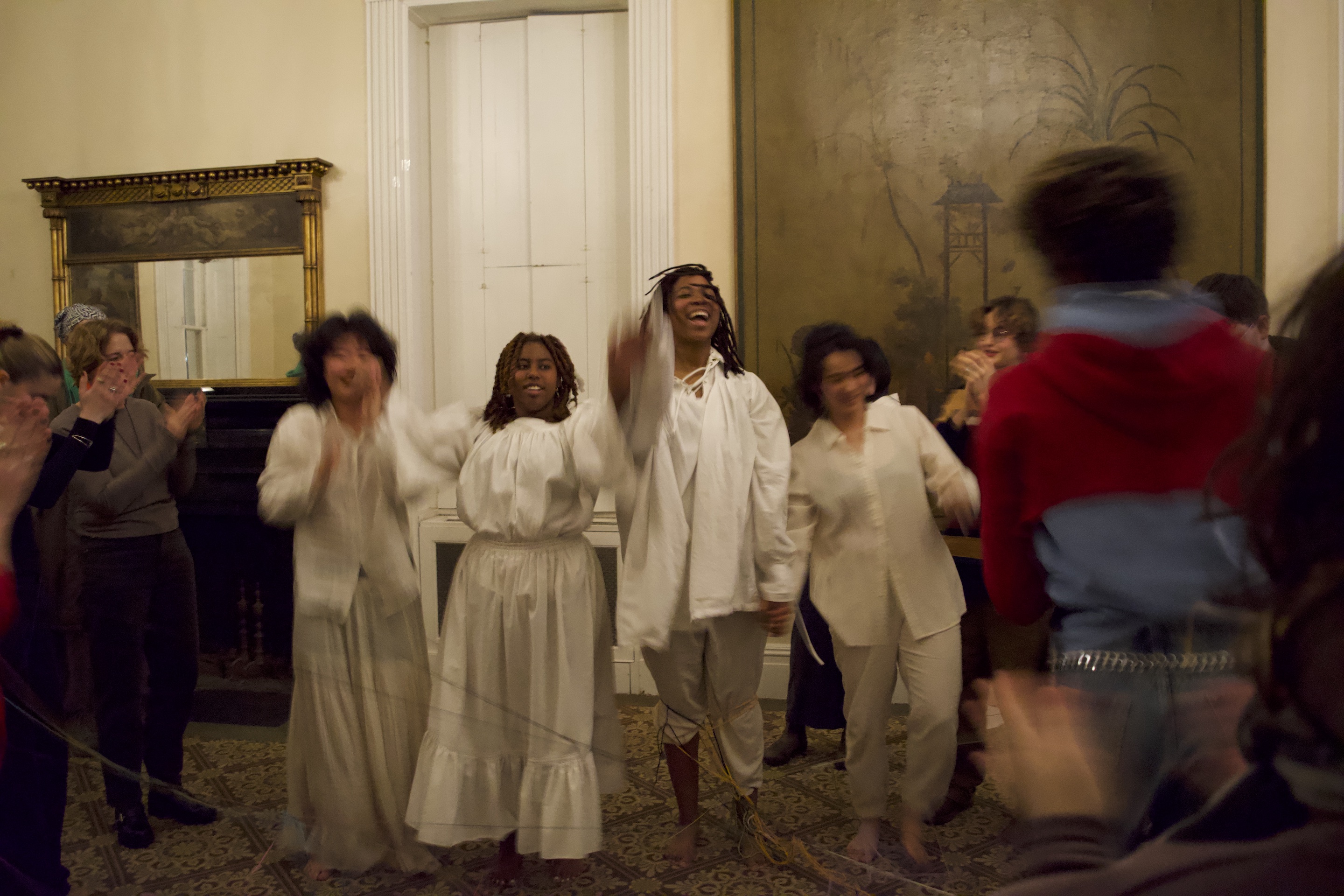
c/o Caleb Henning
I had the honor of being part of the run crew for “imagin/ing,” a theater capstone performance by Alisha Simmons ’24 that took place at Russell House on Friday, April 5 and Saturday, April 6. A senior project in devised ensemble collaboration, “imagin/ing” explored experimental performance art as a transformative medium to cultivate a community of queer people of color on their journey towards liberation.
The performance started with Simmons standing in the front room of Russell House next to a projection of a list of verbs. The audience was challenged to choose an action verb on the screen from tame words such as “sit” or “lay” to more violative acts such as “contort,” “slap,” or “kiss,” which Simmons would then act out. Simmons explained their intention to make the audience experience more immersive.
“I wanted the audience to consider themselves as witnesses,” Simmons said.
Each night, the audience had radically different reactions to the piece. Sometimes people would stand ready at the mic and speedily popcorn instructions at Simmons. Sometimes they nervously stood around and wouldn’t speak. Simmons noted that each audience member was faced with choices. Through “imagin/ing,” they aimed to question what choices the audience would make as surveyors of people of color.
“I wanted to interrogate how, as people of color, we’re performing for you,” Simmons said.
Following Simmons’ probe into surveillance and performance, the audience was led into the next room, where Xiran Tan ’24 had created a piece about translation. Tan danced with books while Simmons filled in the gaps. The performance represented language barriers and the gaps in the Western canon. The second part of Tan’s piece paid particular attention to Russell House’s racist history. As the performance revealed, the Russell family was active in the slave trade and one of the most prominent dealers in the opium trade. According to Simmons, the creators of “imagin/ing” all have ancestors who have been directly hurt by the Russell family.
Simmons and Tan were followed by two more performances. Bre Jordan ’27 put up a piece about spaces that don’t listen. They screamed and banged on walls to make a point about being overlooked and rendered illegible. In a piece based on her photography that explores mother–daughter relationships, Xingyan Guo ’25 invited the audience to put nipple covers on her in order to experiment with skin, flesh, and womanhood. At the end, all four performers gathered to throw strings around and dance. Connected by the string, they invited the audience to come and dance together.
According to Simmons, their capstone is rooted in theories about performance, gender, and race, fusing C. Riley Snorton’s work about the necessity of psychic passing for trans people who don’t medically transition with Frederick Douglass’ imagination of his freedom. In addition, they cited inspiration from a myriad of other sources, ranging from a class called “Making Contemporary Theatre” that they took while studying abroad in London, to performance artists in Atlanta, Ga., and others who believe that performance can become a means of liberation.
I was personally inspired by how Simmons could cultivate a space that was communal, open, and conversational. At the core, Simmons articulated their belief that performance can be a medium for oppressed peoples to live their imagined freedom. In a performance, ideas that are seemingly utopian can become reality. By creating alternate realities and spaces, theater has the potential to build better societies and deconstruct oppressive social norms.
“Theater is about what people can create together,” Simmons said. “In performance you can create such amazing, genuine connections that you can’t get anywhere else.”
When asked about future plans after graduation, Simmons expressed their continued interest in bringing more performance art and diversity into the world of theater.
“What’s next for me is doing art, being gay, and getting a job,” Simmons said.
As Simmons sees it, theater is about making social change and interrogating reality. Simmons’ capstone left a beautiful mark on the University community, and I hope it makes way for more provocative performance art pieces on campus. Theater has so much power to challenge social norms, and I look forward to seeing more students and changemakers take advantage of this opportunity.
Sida Chu contributed reporting.
Liz Laurence can be reached at elaurence@wesleyan.edu.